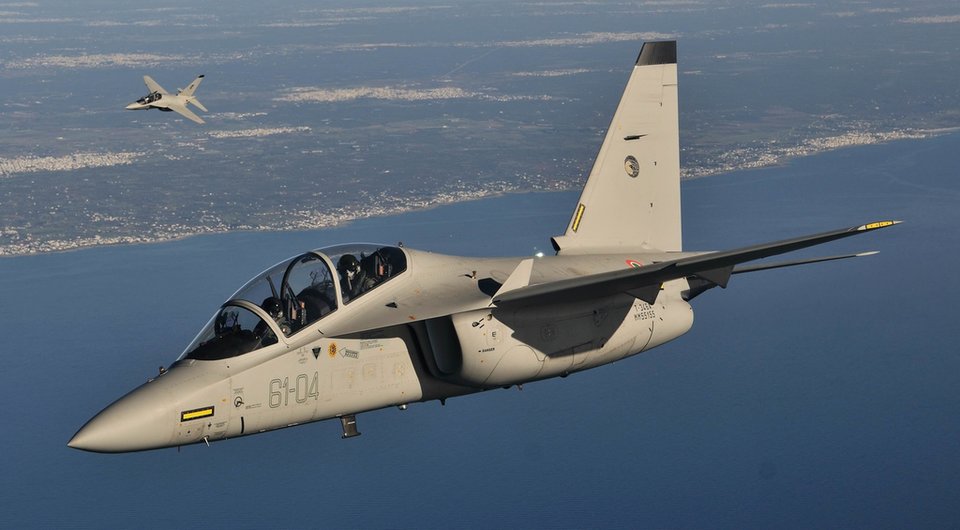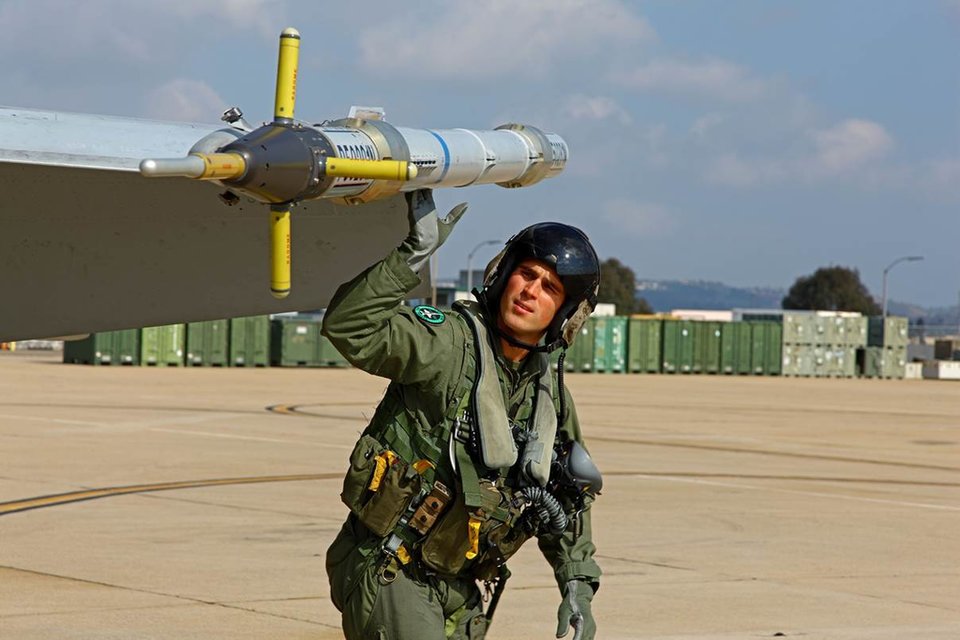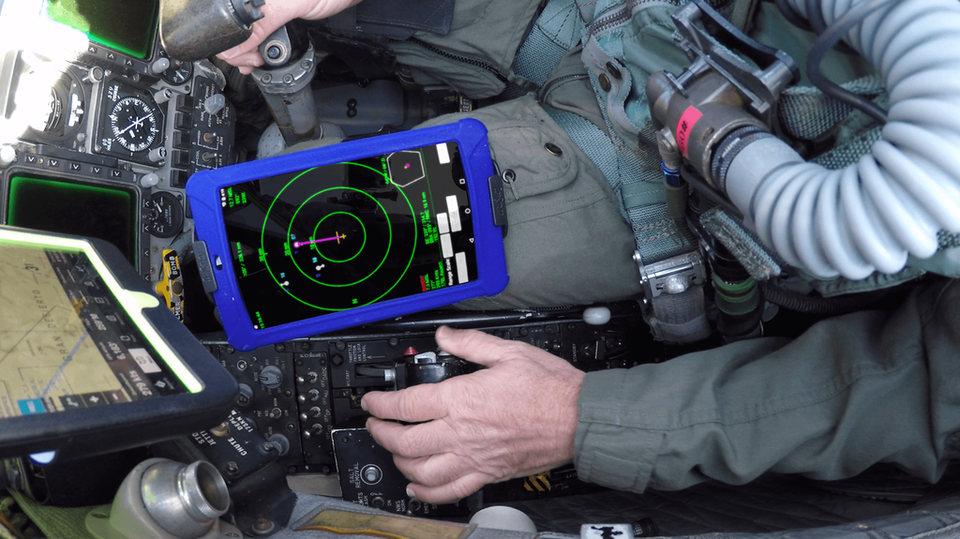air
Live and virtual environments shape the future air combat training
Air combat and the equipment it relies on are evolving rapidly and pilot training needs to keep pace with the technology. The recent Farnborough Airshow showcased various components of the holistic approach to air combat training, from new schools through simulation to making in-combat training more realistic. Berenice Baker reports.
With just a handful of fifth-generation jet fighter aircraft models combat-ready, defence departments are already ramping up funding of R&D into the sixth generation. Such is the pace of change that pilots need their training to be relevant for any future warfare, and the equipment and methods purchased now need to be future-proof to adapt for new deliveries.
This year’s Farnborough Airshow offered the opportunity for manufacturers to demonstrate their latest live and virtual approaches making this happen.
Back to school for pilots
The Italian Air Force and Leonardo announced at Farnborough that they have signed a collaborative agreement to establish a new International Flight Training School (IFTS) to support military pilot training. The agreement aims to strengthen the training services already offered by the Italian Air Force’s 61st Wing, with plans to offer international training services in the future.
IFTS will operate from a dedicated new facility from 2021, with Leonardo supplying four additional M-346 aircraft, new systems and services starting from 2019. Discussions are underway with training specialists Babcock International Group and CAE to support IFTS.
Italian Air Force Chief of Staff Lieutenant General Enzo Vecciarelli said: “The Italian Air Force will strengthen its commitment in the advanced training field, developing a new cooperation model with Leonardo.
“The ongoing training programmes will benefit from new resources, including new trainers provided by Leonardo at no additional cost to the air force. This will maximise the quality of our military training pilots, who will fly fourth and fifth-generation fighters. It will also meet the growing demand for training services from international partners.”

The Italian Air Force’s M-346 trainer aircraft
Cubic Defense takes training to the debrief
Also at Farnborough, Cubic Defense demonstrated how its P5 Combat Training System (CTS) Air Combat Maneuvering Instrumentation (ACMI) had evolved over five decades.
Cubic vice president of business development for Europe Mark Graper is a former fighter pilot who flew F-4 Phantoms, F-16s and F-15E, making him well-placed to explain the company’s offering.
“Cubic invented ACMI in the early 70s,” Graper says. “The original customer was the US Navy, and the intent was to improve fighter pilot performance and their aerial combat skills. Fighter pilots are famous for thinking they’re all the best and they shot the other guy first.
“Our data link tracking tracks the time, space and position of each aircraft very accurately and with weapon simulation software we were able to end the argument. We monitor live engagement and then it’s recorded through playback.
“Any aviator will tell you the majority of the learning is actually in the debrief. You need to have the flying experience, obviously, but the debrief is where the real learning takes place. That’s where Cubic’s live monitor and playback system provides much better learning value for each sortie.”
“Soldiers love to go train on their own, airmen love to go train on their own; [but] the way we fight is together, and that’s why we need to train together.”
Cubic has continued to invest in the system, making it more accurate and reliable. It has been in use on third and fourth-generation aircraft for years, and its latest iteration is on the F-35 as an internal subsystem.
“As you might expect with a stealth aircraft, you don’t want to go hanging things on the outside; it’s no longer stealth,” says Graper. “We’re one of Lockheed Martin’s many sub-contractors and every F-35 in the world, except Israel’s, has our internal ACMI system.”
Cubic is now looking to meet the demand from senior leaders for cross-domain and multi-service training.
“Soldiers love to go train on their own, airmen love to go train on their own; [but] the way we fight is together, and that’s why we need to train together,” says Graper. “Cubic is providing technology to make that joint cross-domain training both more realistic and easier to do with technology. We are bringing together real-time effects adjudication and trying to enable the armies and air forces of the world to train together better and provide an instantaneous data-driven feedback on the effects on the battlefield. The British Army is on the leading edge of developments here.”

Cubic’s P5 combat braining system in action
Cubic is also working with customers on live, virtual and constructive simulation.
“With the advent of the F-35, there’ll be more simulator training and less live training,” says Graper. “There will always be live training, but the balance is going to shift, everybody knows that. We’re working with the US Air Force Research Lab on technologies to link simulators to live aircraft in a very realistic fashion.”
Cubic also showcased its Bandit Board at Farnborough, designed to keep pilots representing the enemy safer during training.
“Fighter aviators need to fight against bad guys,” says Graper. “Much of the time that is done by older aircraft without any radar, or without sophisticated radar. The challenge there is how does the adversary aircraft maintain good situational awareness without radar with 80 aircraft flying. That’s challenging both tactically as well as from a safety of flight perspective.”
“Our P5 combat training system – because each pod talks to every other pod – knows about everybody. So we have devised a means to take the data from that pod on the older aircraft, port it to an Android tablet, and that gives the adversary pilot situational awareness on who is where in all dimensions. This enables them to be better bandits and to be safe.”

Cubic’s Bandit Board in use on a training flight
Rockwell Collins offers JSAS to MOD
Rockwell Collins and DRS announced at Farnborough that they will collaborate to offer their Joint Secure Air Combat Training Solution (JSAS) to the UK Ministry of Defence (MoD) for the Air Support to Defence Operational Training programme and for the Future Air Combat Manoeuvring Instrumentation System requirement.
Rockwell Collins director for live blended test and training solutions Chip Gilkison says: “JSAS brings multi-level encryption to test and training ranges as well five times faster network speeds compared to current systems. The software defined radio is capable of hosting current and future waveforms used for test and training. Using JSAS, armed forces around the world can train better than ever by connecting all aircraft securely as they do operationally and present more realistic threats in terms of quality and quantity.”
“JSAS blends real and synthetic environments, so synthetic targets can be uploaded from ground stations or injected onto the aircraft displays or kneeboards directly.”
JSAS offers the first certified, four-level multiple independent levels of security (MILS) training equipment.
“Test and training ranges transmit ACMI data over an unencrypted network or not at all,” says Gilkison. “This means that sensitive aircraft data can be passed for all to see and many times the data is not shared until debrief and not in real time.
“With the introduction of fifth-generation aircraft that have encryption capabilities, MILS enables them to train with third and fourth-generation aircraft by allowing aircraft data, from top secret to unclassified, to be exchanged air-to-air. MILS enables any aircraft to protect their sensitive data and share it in real-time versus waiting until they have landed to combine data and debrief what actually happened.”
JSAS blends real and synthetic environments, so synthetic targets can be uploaded from ground stations or injected onto the aircraft displays or kneeboards directly.
“The challenge of blending live and synthetic is safety of flight,” says Gilkison. “Pilots flying live aircraft want to know who is live and who is synthetic.”

Illustration of the JSAS system. Image courtesy of Rockwell Collins
JSAS is future-proofed for any new aircraft entering into service as it comes in several different form factors so it can be carried on the wing of an aircraft in a pod or internally on fighters, helicopters and tanker or transport aircraft.
“All of our components consist of the same modules that are available commercially off-the-shelf. As they are updated, new modules can be inserted without breaking any certifications. Our software defined radio will be able to host new waveforms that are being developed as well as all current test and training waveforms.”
Helicopter realism with Esterline’s immersive dome
Not all the training technology on show at Farnborough was for fixed-wing aircraft. Esterline unveiled its helicopter demonstrator featuring an extensive range of the company’s core avionics capabilities as well as the REALITY TD-522 helicopter simulator transportable dome.
Esterline Avionics Systems sales vice president Kristof Vierin said: “The REALITY TD series is designed to fit and operate in an ISO container or the back of an 18 wheeler truck. It can use three of five specialised projectors with a high-tech screen and optics for a realistic flight simulation experience.”